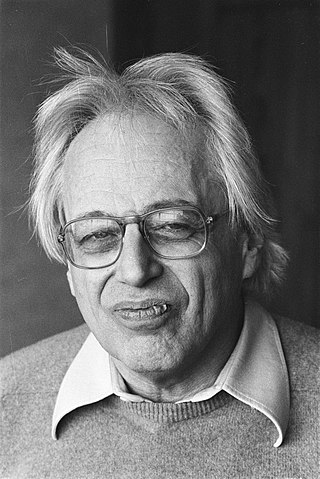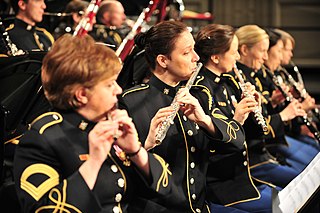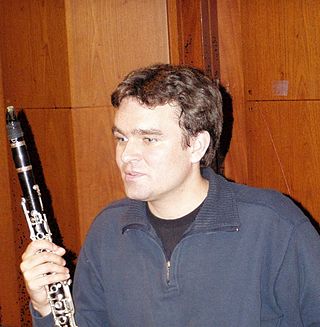Related Research Articles
The Pomp and Circumstance Marches, Op. 39, are a series of five marches for orchestra composed by Sir Edward Elgar. The first four were published between 1901 and 1907, when Elgar was in his forties; the fifth was published in 1930, a few years before his death; and a sixth, compiled posthumously from sketches, was published in 1956 and in 2005–2006. They include some of Elgar's best-known compositions.

The Symphony No. 8 in G major, Op. 88, B. 163, is a symphony by Antonín Dvořák, composed in 1889 at Vysoká u Příbramě, Bohemia, on the occasion of his election to the Bohemian Academy of Science, Literature and Arts. Dvořák conducted the premiere in Prague on 2 February 1890. In contrast to other symphonies of both the composer and the period, the music is cheerful and optimistic. It was originally published as Symphony No. 4.
The two Serenades, Op. 11 and 16, represent early efforts by Johannes Brahms to write orchestral music. They both date from after the 1856 death of Robert Schumann when Brahms was residing in Detmold and had access to an orchestra.
In music, a nonet is a chamber music composition which requires nine musicians for a performance. The standard nonet scoring is for wind quintet, violin, viola, cello, and double bass, though other combinations are also found. Additionally, the term may apply to a group of nine musicians regardless of whether they are playing chamber music.
Music for Prague 1968 is a programmatic work written by Czech-born composer Karel Husa for symphonic band and later transcribed for full orchestra, written shortly after the Soviet Union crushed the Prague Spring reform movement in Czechoslovakia in 1968. Karel Husa was sitting on the dock at his cottage in America at the time, listening to the BBC broadcast of the events on the radio. He was deeply moved, and wrote Music for Prague 1968 to memorialize the events. This piece is a standard among wind ensemble repertoire.

The Concerto for Violin and Orchestra by György Ligeti is a violin concerto written for and dedicated to the violinist Saschko Gawriloff. A performance of the work lasts about 28 minutes.
The Symphony No. 1 by Arnold Bax was completed in 1922 and dedicated to John Ireland. Its outer movements were based on a Piano Sonata in E♭ that Bax subsequently orchestrated, while the central movement was newly composed for the symphony.
The Wooden Prince, Op. 13, Sz. 60, is a one-act pantomime ballet composed by Béla Bartók in 1914–1916 to a scenario by Béla Balázs. It was first performed at the Budapest Opera on 12 May 1917 under the conductor Egisto Tango.

French composer Hector Berlioz wrote a number of "overtures", many of which have become popular concert works. They include true overtures, intended to introduce operas, but also independent concert overtures that are in effect the first orchestral tone poems.
Roy Harris's Symphony No. 3 is a symphony written in 1939. It received its world premiere on February 24, 1939, in Boston, with Serge Koussevitzky conducting the Boston Symphony Orchestra.
UFO is a composition written by American composer Michael Daugherty for percussionist Evelyn Glennie.
In music, a decet—sometimes dectet, decimet, decimette, or even tentet—is a composition that requires ten musicians for a performance, or a musical group that consists of ten people. The corresponding German word is Dezett, the French is dixtuor. Unlike some other musical ensembles such as the string quartet, there is no established or standard set of instruments in a decet.

The woodwind section, which consists of woodwind instruments, is one of the main sections of an orchestra or concert band. Woodwind sections contain instruments given Hornbostel-Sachs classifications of 421 and 422, but exclude 423

Symphony No. 2, Ascensão (Ascension) is a composition by the Brazilian composer Heitor Villa-Lobos, written between 1917 and 1944.

Symphony No. 3 is a composition by the Brazilian composer Heitor Villa-Lobos, written in 1919. A performance lasts about 35 minutes.

Symphony No. 4, "A Vitória" (Victory) is a composition by the Brazilian composer Heitor Villa-Lobos, written in 1919. A recording conducted by the composer lasts just over thirty minutes.

Partita, five reminiscences for large orchestra is a collection of musical pieces by Jörg Widmann. It was written for the 275th anniversary of the Leipzig Gewandhaus Orchestra in 2018.
The Symphony No. 3, Op. 35, is an orchestral composition by the Finnish composer Aulis Sallinen, who wrote the piece from 1974–75 on commission from the Finnish Broadcasting Company. The Finnish Radio Symphony Orchestra premiered the work on 8 April 1975 in Helsinki, under the direction of its principal conductor, Okko Kamu. The symphony was the first by Sallinen to depart from the single-movement structure he had utilized for his previous two essays in the form.
The Symphony No. 1, Op. 24, is an orchestral composition by the Finnish composer Aulis Sallinen, who began writing the piece in 1970 when the City of Helsinki announced a composers' competition to mark the inauguration of Finlandia Hall. Completing the symphony in 1971, Sallinen was awarded First Prize in the contest; the Helsinki Philharmonic Orchestra and its music director, Jorma Panula, premiered the work at Finlandia Hall during the 2 December inaugural festivities.
The Symphony No. 4, Op. 49, is an orchestral composition by the Finnish composer Aulis Sallinen, who wrote the piece from 1978–79 for a commission from the City of Turku, to celebrate its 750th anniversary. The Turku Philharmonic Orchestra premiered the work on 9 August 1979, under the direction of its principal conductor, Pertti Pekkanen.
References
- Schuman, William (1942). Symphony no. 3 (score). G. Schirmer
Notes
- ↑ The date and place (Larchmont, New York) of completion are printed in the margin on the last page (p. 82) of the score.
- ↑ The dedication "For Serge Koussevitsky" appears on p. 1 of the score.
- ↑ From the score's "List of Instruments"
- ↑ (Letter designations are from the score.)